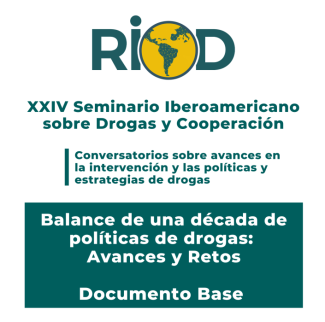Review of a decade of drug policy: Progress and Challenges

According to the latest World Drug Report published by the United Nations Office on Drugs and Crime (UNODC) for the year 2022, around 284 million people between the ages of 15 and 64 used drugs worldwide in 2020, an increase of 26% compared to the previous decade. Young people are using more drugs and consumption levels today in many countries are higher than those of the previous generation.
On the other hand, it is estimated that, globally, 11.2 million people use drugs intravenously. In many countries of the Americas, the highest proportion of people in treatment for drug use disorders is found there primarily for cannabis use disorders. In the United States and Canada, overdose deaths, caused primarily by the epidemic of non-medical fentanyl use, continue to grow. Preliminary estimates in the United States point to more than 107,000 overdose deaths in 2021, up from about 92,000 in 2020.
To the increase in consumption rates, a series of phenomena and circumstances - both social, economic and health - are added, which further complicate the problem of the demand and supply of drugs. These include the continuous emergence of New Psychoactive Substances (hereinafter, NSP), new forms of drug marketing, the increase in social fragility and psychiatric comorbidity, among some of the most relevant points. In this context of the situation, it is also necessary to assess the impact of the COVID-19 pandemic, which has left consequences at the social level, economic and health in general. But also in recent years, in terms of policies and agreements, a series of documents has been formed and disseminated that has outlined new directions and perspectives in addressing the world drug phenomenon. Several of these documents have been prepared by multilateral organizations and are the products of arduous discussions and consensus assumed by the member states of the respective organizations.
In these documents, definitions and perspectives were progressively introduced that generated a greater understanding of the reality of drugs, which implies a more comprehensive look at drug policies and specifically in their approach. the public health approach, the importance of the participation of civil society, the relevance of local strategies, attention to specific groups (such as the population deprived of liberty or in street situations), are some of the 4 common denominators that have been incorporated in a consensual way in recent years.